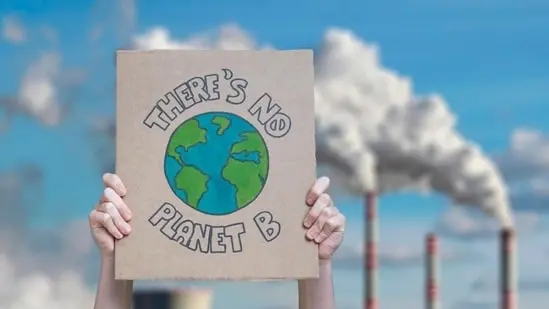
Over the past decade, India has actively engaged in triangular cooperation (TrC) with partner countries and multilateral institutions, with a strong focus on climate mitigation and adaptation. This paper seeks to decode India’s engagement in climate TrC by exploring:
- the role that triangular engagements play within India’s broader climate diplomacy;
- the motivations that drive India and its partners to increase engagement in TrC;
- the institutional models that India and its partner countries have used to operationalise TrC with each other; and
- India’s policy options for expanding the impact and significance of its triangular engagements, in turn strengthening its portfolio as a credible development partner.
The research questions are addressed through qualitative analysis of data collected from 26 high-level stakeholder interviews as well as expert group consultations with relevant academics and practitioners.

Climate action and clean energy have had a strong emphasis in India’s recent TrC engagements. Further, three of the four triangular multilateral initiatives spearheaded by India are climate-oriented – the International Solar Alliance (ISA), the Coalition for Disaster Resilient Infrastructure (CDRI), and the Global Biofuels Alliance (GBA). Key points to note are:
- The climate crisis has been high on the agenda in triangular engagements with India because partner countries have realised that the Global South urgently needs cost-effective, bottom-up solutions that India can supply to other developing countries based on its own experiences.
- The approach has been to ensure that the proposed climate solutions complement the national development goals of recipient countries, for improved health care, education, agriculture, gender equity, and disaster risk reduction.
- Compared to previous one-off TrC engagements, India has started to engage in long-term programmatic engagements based on its foreign policy priorities. India has shown willingness to support these engagements with finances and human resources.
- As triangular projects have been small-scale, focused on capacity-building and pilots, they cannot replace India’s broader climate diplomacy at multilateral, plurilateral, and bilateral levels.
- Therefore, TrC currently plays a symbolic role for India, signalling the country’s willingness for burden-sharing and offering alternative models of cooperation beyond North–South paradigms.
- However, TrC is instrumental for India to build up its climate portfolio in countries where it has low diplomatic presence and limited bilateral capacity to engage in developmental projects. This is especially important for engagement with large-ocean states and Least Developed Countries (LDCs).
- Finally, by leveraging the better-established institutional channels of facilitating partners, TrC provides an opportunity for India to learn through experience and experimentation on how to build up its own diplomatic capabilities.
Once, not as prominent, India has recently been an active participant formally institutionalising triangular projects in longer-term engagements. The following table describes the motivations from various partner countries to engage in TrC.

The ideation of TrC is at high-level political meetings between heads of state from India and facilitating countries. The operationalisation of projects is then done by bureaucrats and diplomats from both countries. Even though India has engaged in only a handful of triangular agreements, there is substantial variation in the way these engagements are operationalised.
Agreements with Germany and the US are sector specific, focused on pilot projects and capacity building respectively. They are at a “learning by doing” stage, with a few small-scale projects. These countries are cautious about committing additional finances and resources for scale up before evaluating the success of initial projects and strengthening institutional channels for project coordination.
On the other hand, the UK and France have taken a more ambitious route by proposing the establishment of joint triangular funds with India to finance the expansion of start-ups and early-stage enterprises to third countries. Operationalising these funds has been difficult with roadblocks in finding appropriate institutional channels for financial disbursement and project selection. However, if successful, the UK and France models can have a high impact as they involve significant financial amounts.

Given its limited developmental capacity to execute projects abroad compared to facilitating partners, India should increasingly leverage triangular partnerships. If India is seen as a credible TrC partner, India can expand its diplomatic presence in the Global South through new collaborations with partners such as Australia and the Gulf Cooperation Council. However, for TrC not to lose momentum due to a lack of institutional and policy support, India must address a few key challenges:
- Poor institutional capacity: India lacks a dedicated developmental cooperation agency with current institutional resources being insufficient to manage newer forms of cooperation, such as plurilaterals and triangular projects. This has resulted in delays in project implementation, high overheads, and poor inter-ministerial coordination.
- Inability to operationalise joint funds: Despite years of back-and-forth, poor institutional clarity and inexperience have created significant barriers to operationalising triangular funds with the UK and France. A key consideration is the lack of an institution in India capable of housing a triangular fund to ensure financial disbursal, conduct joint selection and monitor projects.
- Weak strategic vision: India currently has little strategic vision of how to leverage TrC to fulfil its ambitions of becoming a developmental partner. There is no clear framework to determine which sectors, countries, and strategies to pursue. Strategies and project proposals appear to be primarily driven by background research conducted by facilitating partner networks.
- Lack of reporting and monitoring mechanisms: India does not have a separate reporting mechanism for triangular projects. The absence of standardised evaluation, reporting and monitoring metrics makes it difficult to quantify the impact of projects. To scale up, it is essential to maintain a proper record of past experiences and iteratively learn how to establish effective cooperation channels and operationalisation mechanisms.

India must take steps to strengthen state capacity, integrate lessons from initial projects, and develop a systematic understanding of regions and sectors to target. Focusing on climate-friendly solutions and creating a database of replicable innovations for third countries will also be crucial. The following section provides key policy options on how India can become an improved triangular partner:
- Create a dedicated department: India can establish a dedicated development agency or a new division within the ministry of external affairs (MEA) to manage development cooperation projects, including triangular engagements.
- Develop a vision document: India should position TrC within a broader framework, considering its short, medium, and long-term foreign policy ambitions. For instance, countries such as Brazil have included TrC as an important foreign policy tool at multilateral forums including the G20. This vision document should guide India’s strategic engagements to enhance its credibility as a developmental partner.
- Adopt best practices from facilitating countries with well-established developmental models: India should learn from and adopt best practices of facilitating partner countries, such as institutional mechanisms, operational channels, and network-building strategies adapted for the Indian context to enhance its own development portfolio.
- Improve monitoring and evaluation: Based on ongoing and completed projects India can develop its own systems for reporting, monitoring, and evaluation of TrC projects. For instance, the MEA needs a mechanism to detail what has worked, what has not, and the potential way forward to scale up projects. This will provide insights into the impact of these projects to assess whether replication is viable in the long term.
- Develop joint norms, standards, and regulations: Establish joint norms and standards for implementation, adapting them to the needs of the Global South rather than merely following the standards of the Global North. This approach will enable India to create its own distinct operating procedures as a development partner, which are more bottom-up and suited to the developing world.
- Categorise the current need for technological solutions in different regions: Utilise resources of facilitating partners to conduct studies on the demand for technologies in recipient countries and undertake effective supply-demand matching between India and third countries.
- Identify countries interested in partnering with India: Determine which countries are receptive to partnering with India and how these countries impact India’s foreign policy diplomacy.
- Create facilitating platforms: The private sector, often absent in TrC, plays a significant role in scaling up solutions in third countries, particularly through grassroots entrepreneurs and start-ups. India can serve as a conduit for private sector participation by creating and supporting initiatives similar to the Sankalp Africa Summit, which provides a platform for social entrepreneurs to secure international capital for projects in third countries.
- Create incentives for expansion to third countries: Given India’s limited domestic capacity abroad, the private sector can be provided opportunities to expand to third countries. These can be concessional financing, mentoring, incubation and de-risking mechanisms to work abroad.
- Showcase TrC models at multilaterals: Through triangular partnerships, India can build credibility as a climate leader by showcasing successful projects at international forums and multilateral platforms such as the Conference of the Parties (COP) and G20. India should highlight TrC as a horizontal, needs-based approach to climate governance, focusing on the Global South’s needs.
- Continue focus on climate solutions for development: The approach should stress on India’s unique focus on climate-friendly solutions that benefit the development of the Global South, such as those in agriculture, health, and gender equity. India should continue to focus on climate adaptation and mitigation technologies, using think tanks and facilitating partners to create databases of the most effective domestic solutions for replication in third countries.
- Improve energy security and expand into green supply chains: Through new partnerships created through TrC, India can create resilient supply chains for critical minerals and technology transfer needed to enable its domestic energy transitions. India can also leverage its partnerships to co-create energy solutions that can integrate the country’s manufacturing capacity into global green supply chains.
This paper can be accessed here.
This paper is authored by Pooja Vijay Ramamurthi, fellow, CSEP, New Delhi.
